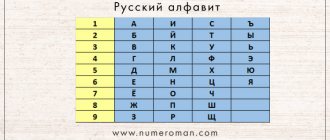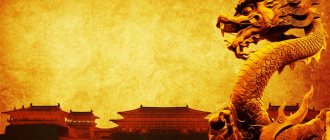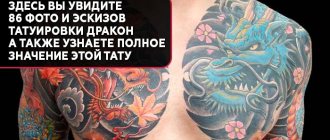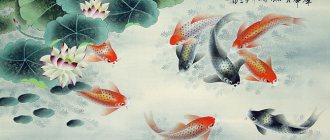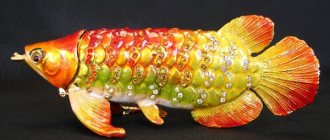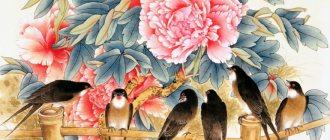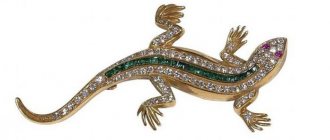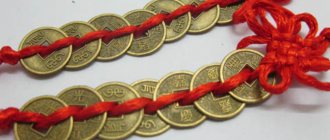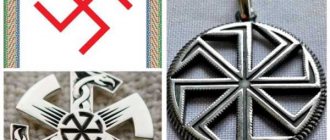In the teachings of Feng Shui, the dragon is a fundamental creature for veneration - strong and wise, endowed with a bunch of qualities that were attributed mainly to emperors. And to be born in the year of the Dragon is generally the grace of heaven. For any Chinese, you will directly become a matchmaker, friend and brother if he finds out that you were born in the Year of the Dragon. Why is that?
Dragon in feng shui
There are many versions about the role dragons played in the life of humanity. For some, these are some ancient civilizations that lived on our planet and were simply animals - dinosaurs. For some, dragons are the same mythologically interesting ancient animals of a mythical nature that accompanied various ancient cultures, for example the culture of Ancient China.
It is known that this ancient race of Dragons were protectors of people and the Earth, their main task was to maintain balance and preserve secret knowledge about the structure of the world. After all, everyone has seen films in which dragons in caves guard some untold riches and what tests those who come for gold have to go through.
Dragon in the cave
Only in films do we see a more down-to-earth picture, that these riches are precious stones and precious metals, but in fact, dragons kept knowledge, information about the structure of the universe, which is more valuable than any gold. Hence the belief that defeating a dragon or taming a dragon means going through fire, water and copper pipes, and ultimately taking the path of spiritual development.
Do you remember in Russian fairy tales what the good fellow had to do with the Serpent Gorynych? That's right, definitely win! That's it.
Zmey Gorynych, Kudykina Mountain, Lipetsk region
Dragons have a unique property - they can control the ether (in Feng Shui, Qi Energy) at a level that we have never even dreamed of. They are literally woven from ether and everything that exists around them is magic. Dragons themselves are a clot of that same magic, therefore, when in some chronicles and fairy tales they are described as fire-breathing, this is not an entirely correct phrase.
The fact is that they control the ether so much that they melt it with thought forms. Do you know that if you melt a gas, and ether has the ability to do this, then plasma is formed. This is how the same plasma-fire that we see in images or films about dragons is formed. Of course, the force here is mostly not fiery, it is more like a radioactive or nuclear explosion, that is, the power is absolutely stunning.
Chinese Dragon - Long Wang
But this is not the only ability of dragons. They are also able to change shape, take on certain forms, moreover, they are able to speak telepathically, and this is the highest measure of magical development. Knowing this, people in Asian countries have always revered dragons and have intensively used and continue to use images and figures of dragons in all areas of life, from architecture to jewelry, talismans, and coins.
What does a Chinese dragon look like?
I think everyone knows perfectly well what a dragon looks like - it is a powerful flying reptile that breathes fire. But we must understand that dragons are different.
There are a large number of classifications, but the simplest is associated with 9 types of dragons:
- Heavenly
- Spiritual
- Winged
- Serpentine
- Horned
- Nosy
- Yellow
- Water
- Guardian Dragon
Conventionally, this entire classification of dragon species differs by habitat (water, air, underground, etc.) or by body features (with wings, without wings, with a large nose, etc.).
Water dragon
So, according to Feng Shui, the Chinese worship the king of all dragons, the largest of all representatives - Long Wang, the lord of water and sky, who has the body of a snake, the head of a camel, the antlers of a deer, the scales of a carp, the legs and claws of an eagle, the paws of a tiger, the eyes of a demon and the ears of a cow.
He has a bump on his head that allows him to fly into the sky without wings. And unlike European dragons, Chinese is a symbol of goodness, wisdom and protection. He is not aggressive towards a person, but rather patronizes him. Lun lives in the sky in summer, in the sea in autumn, and sleeps underground in winter.
True, its descriptions may differ in different treatises. For example, if this concerned the dragon as a symbol of the horoscope, then it was believed that it absorbs the attributes of 11 other signs: the mustache of a rat, the claws and teeth of a tiger, the horns of a bull, the body of a snake, the beard of a goat, the legs of a horse, the comb of a rooster, the ears of a dog, the muzzle a boar, but the resourcefulness of a monkey. That is, such a collective image, the main one above all.
Western dragon
What is also noteworthy is that the Chinese dragon (龍, lun) has its own digital codes associated with the universe. There are 117 scales on his body - this is the number of 1/3 days in a year. Of these, 81 have the energy of the masculine (Yang), and 36 of the feminine (Yin). These numbers are multiples of 9, and nine is known to be a fundamental number in many cultures, not just Chinese. Thus, we get 9 male nodes (9x9=81) and 4 female nodes (4x9=36). All together this gives the beginning of new life and energy.
Dragon and China
For the Chinese, a dragon is the personification of strength, flexibility, intelligence, elusiveness, power, power - in a word, those qualities that should be inherent in an emperor. All the symbolism associated with the dragon, first of all, was at one time available only to emperors and had a pronounced Yang energy, and counterbalancing it with Yin energy was the image of the mythical bird - the Red Phoenix. Therefore, the empress (the emperor's wife) had the right to use images of the Phoenix in her clothing and jewelry.
Dragon and Phoenix
Often on souvenir products you can see a combination of images of the Dragon and Phoenix - this is a reference to the tandem of love, harmony, family, and relationships.
From the point of view of astronomers and astrologers of antiquity, the Dragon was associated with such a compass direction as the East. This group of stars symbolizes the Palace of Spring, and the voice (or voice) of the Dragon is the sound of thunder.
In ancient times, the image of the Dragon was on the national flag of China, but with the arrival of the European “masters,” the authorities had to remove the dragon, since it had a rather intimidating effect on foreigners and evoked thoughts of hidden aggression and disobedience.
Dragons on the roof
However, the common people were against this and still continued to worship the dragon and use its images everywhere. This has been preserved to this day - there is no dragon on the flag, but it is in the culture of the country and the souls of the people. Every year in China there are festivals of veneration with massive processions of dragon figures.
During the years of the Dragon, China experiences birth booms (the next Year of the Dragon will be in 2024), therefore it is believed that in such a year a gifted, intelligent person is born, who can even become a ruler. Or if he doesn’t become a ruler, he can easily achieve heights in life. This is a great honor for the family. If such a child is born into a poor family, then high hopes are placed on him.
Symbol in different cultures
Mythologies around the world describe ancient creatures depending on their views and beliefs. Most of them are confident in the wisdom and kindness of the winged serpent, its desire to protect people and increase their happiness.
Far East
In Chinese culture, an animal is a symbol of higher power and mysterious knowledge. The creature adorns the emblem of this people. Every resident of the country considers it obligatory to place an amulet with a dragon in their home. Even the hieroglyph Ryu, meaning an ancient animal, has an important interpretation:
- force;
- intelligence;
- mysterious abilities;
- developed spirit.
During the time of the emperors, the dragon adorned the robe of the monarch. On the patterns of the ruler’s clothes, the animal had five claws, and the courtiers embroidered a creature with four on fabrics. The meaning of this symbol is the dominance of the emperor and his power, which allowed him to control matter.
Every generation here knows the legend where a chariot with six winged serpents helps the Sun every day to make its way around the Earth.
Russia
Slavic symbolism used the dragon as an identification of evil and the devil, dark forces. Enemy peoples were depicted as ancient creatures. This opinion was also supported by folk tales, where the Serpent Gorynych committed unsightly acts, and majestic heroes freed prisoners, destroying the evil creature.
The image of a fallen animal can also be seen on the icon of the patron saint of the Russian population - St. George the Victorious.
Celts
In the legends of this people, the ancient creature symbolizes independence. Here the dragon inspires primeval terror in the warriors, which leaves the animal undefeated time after time.
A fight with a winged serpent means a struggle for knowledge and experience, symbolizes the destruction of the dark side of a person’s personality, victory over bad thoughts and habits.
Europe
Western culture shows the dragon as the personification of evil, through battle with which one can find harmony. In religious frescoes, the overthrow of an ancient creature means control over desires, overcoming the craving for sin.
One of the incarnations of the dragon was the basilisk. The gaze of this creature is fatal to all living things.
Later, the winged serpent began to symbolize wars, natural disasters, and viruses. Everything dark and evil that humanity suffers from was personified by the dragon. Closer to the Middle Ages, the mythical creature began to be credited with immeasurable wisdom, keen vision and fortitude.
Other countries
The winged serpent adorns the myths and legends of almost all nations:
- In Egypt, the creature is considered a symbol of the god of the dead, evil in the flesh. Every night Ra, the sun god, wages war with him, winning victory every day.
- In Greek mythology, the dragon is the protector of the Tree of Life, who knows no death. He is attentive and reliable.
- In Jewish culture, the creature represents emptiness and melancholy. He lives in the desert, forever being alone.
- Among the Sumerians, the dragon confronts the god of Water, who is fighting for the freedom of the beautiful Ereshkigal.
An important symbol is the alchemical Ouroboros, where the creature grabs its own tail. The sign identifies the infinity of all things.
The Old Testament shows the dragon as the personification of evil and Satan. Here his name is Leviathan.
The meaning of dragons in feng shui
Let's consider the meaning of the dragon in Feng Shui, how it can be used with the help of images or figurines, from the point of view of symbolism that we can place in a house or apartment.
The first and most important thing is that the dragon brings good luck in a career, plays a role in increasing wealth and in business in general.
2nd is attracting favorable energy Qi. The dragon, as a Yang symbol, is capable of attracting powerful flows of energy, especially if you have some kind of stagnation in places at home.
Dragon - protective talisman
3rd - function of protection against the evil eye, acts as a protective talisman.
The 4th dragon is the symbol and patron of men in the house, so if a man has some difficulties and we want to support him, then an excellent solution would be to use an image or symbol of a feng shui dragon in the house.
The 5th dragon as a talisman is more suitable for married couples who strive to create harmony in their relationships, as well as for those who are still searching, that is, it helps to improve their personal lives.
The 6th is a symbol of wisdom, calm and harmony.
Rules for placing the mascot
If you have chosen this fictional creature as a personal amulet, it is very important to place it correctly in the house, because it can suppress negativity or, on the contrary, bring it.
According to Feng Shui, you need to adhere to the following rules:
- You need to place the dragon figure in the eastern part of the house or direct the figurine’s gaze towards the east.
- It is better to place this talisman near the front door on the left, so it will not let evil spirits onto the threshold.
- Place in areas where air flows freely.
- Since this symbol has enormous energy, it is better to place it in the living room or office.
- It is not recommended to have many such talismans in an apartment; their strong energy will be suppressed.
- It is better to place the totem below eye level so that the energy does not dominate.
When choosing this amulet, it is worth remembering that it has a beneficial effect on people’s energy and promotes spiritual and material development. This talisman will help you maintain strength and find balance between the material and spiritual worlds.
Dragon color meaning
Green and Golden Dragon
1) Green Feng Shui dragon is a symbol of the military, a symbol of spring and happiness, as well as a symbol of change.
2) The golden dragon (considered the imperial color) is used mainly to attract wealth.
3) Blue or black is the color scheme of the element of water, helps in harmonizing space.
4) Red is a symbol of the sky, which represents powerful Yang energy. Therefore, if there is not enough energy, then you need to use the red dragon.
Black and Red Dragon
Criteria for choosing an amulet
The amulet is selected individually depending on the needs of the person. When purchasing a talisman, you need to consider its size. Large, overly bulky figurines emit powerful energy - they can be installed in rooms where mostly men spend time. For women, small, neat figures, exquisite brooches or pendants are suitable.
When purchasing a Dragon talisman, its size is taken into account.
The color of the dragon also matters:
- green - symbolizes health, mental well-being, spiritual development;
- black - responsible for protecting its owner and attacking enemies;
- golden - able to attract luck and wealth into a person’s life;
- white - helps its owner to unite with the divine principle, find harmony within himself, and open his consciousness;
- red - provides a person with strength and power.
The figure of a dragon holding a pearl is popular - such an amulet helps fulfill desires and creates additional sources of income.
Esotericists recommend paying attention to the number of dragon claws - it’s better if there are 4 of them. Sometimes you can see figurines with tails tied in a knot. This is symbolic, since it is believed that the power of this divine creature lies precisely in the tail.
As for the materials from which amulets are made, it is better to choose silver or gold jewelry. When it comes to decorative figurines, a crystal talisman is considered a good option.
How to choose the right dragon according to Feng Shui when buying
It is better to purchase the size of a figurine or image in a medium or small size. There is no need to acquire too much, because the symbol itself is already quite powerful in energy, and when it becomes too much, it can lead to conflicts in families or some unpredictable and unpleasant events.
Dragon figurine with pearl
There is no need to take huge wall-length panels with a dragon or some huge statue in the garden; after all, we are not in China, and without knowing all the laws, the actions of huge dragon symbols can easily cause harm. And ignorance, as they say, is no excuse from responsibility.
Color also matters, but it is not as critical as, for example, in a situation with size, if you are simply buying a dragon to attract good luck, prosperity or harmony in the family, but it would be nice to take into account the color of the Feng Shui dragon.
Dragon on buildings
Quantity. Try not to keep more than one dragon in your house, because if there are many of them in your house, the dragon will begin to dominate you and dictate terms to you. The dragon is a symbol of a man, that is, this can lead to the fact that the man in the family begins to suppress the woman.
The presence of a pearl in a water dragon.
How to do it yourself?
Usually purchased figurines of dragons are used for talismans, but if you really want to, you can make an amulet with your own hands: this way it will have even greater power.
- Using the beading technique, you can make a small dragon; for this you only need small beads, wire and a regular sewing needle.
- You can also embroider a dragon on home clothes, for example on the back of a robe. For this you also don’t need a lot of materials: any yarn and a special needle that will take strong fabric.
- If these options seem too dreary to you, then using polymer clay you can make a figurine yourself. In operation, this material is similar to plasticine, the only difference being that after drying, your sculpture takes on a solid shape and is then practically not subject to mechanical damage.
We recommend: A powerful talisman - a talisman ring: meaning, production, use. What kind of jewelry can become an amulet?
Dragon Pearl
Feng Shui dragon with pearl
It is believed that water dragons have this favorite toy and symbol of power, through which they interact from heaven to earth, throw from the sky, giving either thunderclaps and floods, or blessed rain. This is part of the ether (Qi energy) that gives additional energy to the dragon. Sometimes it is depicted as if with tongues of flame on top, however, this is not flame, but plasma.
A pearl in the mouth is a symbol of fulfillment of desires, a pearl in the paw is a symbol of greatness, power, wisdom and dignity.
Dragon with pearl, Thailand
If there is no pearl, then he may become very angry and such a talisman in the house will not bring results, or will begin to cause obstacles in business.
Where to put the dragon - cardinal directions and rooms
Kyoto Prefecture, Japan
The best place for a dragon according to Feng Shui is in the east of a house or apartment, and it is better if it is in the east of the living room or dining area.
Meaning in the East:
- family patron - protecting the whole family from troubles
- family well-being - luck, including material
- health of the whole family
- supporting men or even attracting men
- to strengthen a man’s affairs or position in the family
If it turns out that it is not possible to place a dragon in the east of the living or dining area, then you can place it anywhere, but it should face the east. Single women can do this, buy a dragon figurine, place it in the east or facing the east.
In the southeast and north:
To advance in your career, even if you are in the southeast or not the north, the dragon’s face must look east, towards its home sector.
The same information applies to your workplace. A Feng Shui dragon can be placed on your desk or within your work office, if you have the opportunity. You can install it in the southeast, in the north for a career or in the northwest (this is a sector that helps attract help and support, including from superior people), if you feel that you need such support, then feel free to install it there figurine or image of a dragon.
If you want to use a dragon for protection, then you need to install it in the hallway, next to the entrance area. To the left of the entrance, not lower than 60 cm from the floor, but should not be higher than your height or almost at head level. Otherwise, the dragon will begin to dominate you and not eat well.
Moreover, by placing the dragon to the left of the entrance, we often strengthen the position of a man in the family if he has difficulties with his physical or psycho-emotional health or is lazy and does nothing.
You can put a dragon on a window if the view from the window overlooks an active part of the road. Only this is not a road along which a couple of cars pass per hour, but an active route or vital intersections.
Dragon with a pearl in its mouth
If the view from the window overlooks water bodies, even if they are not visible, but you know that there is a river, lake, sea or ocean in that direction, then it is very good when the dragon looks at the water. By the way, it could even be a water tower or something similar.
The water must be clean and flowing, it should not be reservoirs with stagnant water, such as ponds in which there are no underground sources, and water does not circulate in them, some dirty rivers or polluted reservoirs. The dragon absorbs this energy and accumulates it, thus mentally attracting energy to your home, so it is better not to use such an activator.
Dragons love cleanliness and fresh air. Since these are mythical animals that either live in water or move through the air, therefore this freedom and purity of natural thoughts is very important, try to wipe the dust off it as often as possible and ventilate the room where it is located.
If the dragon is under an air conditioner or fan, this is also good.
Where should you not place a dragon?
Where you can’t put a dragon
In the bathroom, in the toilet, in rooms that are not actively used or used for hygiene purposes, the image of a dragon or its figurine cannot be used. It is believed that being in water bodies (bathroom, bathtub, etc.) the luck that we attribute to the dragon disappears, and if we lock it in dark closets, then it is not comfortable there. He feels abandoned and unnecessary, which can lead to various breakdowns in the house and troubles in the family.
You cannot install or hang an image of a dragon in the bedroom, since the dragon has active Yang energy - the energy of growth, development, noise, and the bedroom is a Yin position, where there is silence, calm, harmony.
It will not contribute to quality sleep and most likely it will not bring you good luck there either. Even if your bedroom falls in the eastern zone and this is the only eastern sector of the house, then you will use other suitable locations, but of course not the bathroom or toilet.
It is not recommended to install a dragon in the south, because the South is a fiery zone.
The dragon does not like to be treated with disdain, as it is a majestic animal, so it cannot be put in a corner. He will think that you have driven him into a corner, punished him for something, or are dismissive of him; accordingly, he may get upset and begin to act differently than you wanted, becoming aggressive towards you and members of the entire family.
Safety precautions for using the Dragon of Good Luck talisman.
1) You cannot place the Dragon figurine anywhere, it will not bring good luck everywhere. Therefore, be careful when choosing a place for the Dragon of Luck. 2) Treat your Lucky Dragon talisman with respect. No, he doesn’t need to pray at all, but it’s better to treat him politely so that he doesn’t get offended. 3) This talisman is very strong, so never install the Dragon too high in your house (it should not stand higher than the head of the shortest adult in the family). Otherwise, the dragon will begin to control or manipulate those living in the house, instead of helping them. 4) Since this talisman is very powerful, do not buy or install a huge figurine in your apartment or office, otherwise it will begin to dominate and an outflow of money and other troubles will follow. 5) You cannot place the Dragon figurine in the closet, in the closet, in the bedroom, in the garage, in the toilet and in the bathroom: being in such places, the Dragon can be more likely to cause harm. 6) Do not place two Dragon figures in one room (unless the room is huge). Otherwise, instead of benefit, you will get a conflict between the two strongest talismans, and the result may be chaos in the energies of your home, an increase in the speed of flows of negative “Sha” energy. 7) If your apartment is not huge, then do not place more than five Dragon figurines in your home. More doesn't mean better.
Feng Shui Dragon Hour and its activation
Bulging eyes of a dragon - activation
Take black mascara or gouache and a regular brush. Dip it, place it where the dragon’s eyes are just black dots on the eyes, thus drawing his pupils. If you look at the figurines, their eyes are the same color as the color scheme of the entire body. This must be done from 07.00 to 09.00 in the morning during the hour of the dragon. There is no need to change the time, to complicate everything, just at this time in the time zone in which you live.
That is, we awaken the dragon and, as it were, tell him: “Look, now you will live here.” We install it according to the rules described above. That's all. This way, your talisman will be in working order.
How to activate the amulet
The correct operation of the amulet with the dragon is ensured by its initiation. To convey respect to the animal and a request for protection of the owner and home, you need to open his eyes:
- Using the Chinese calendar, the nearest Dragon day is calculated.
- On the chosen date, they get up at dawn, and at 7:00 they turn the creature’s gaze to the east.
- Dots are painted on the animal's eyes with black paint.
The magical ritual is performed silently. In thoughts they form desires and goals that the dragon will fulfill in the family. It is important to treat the animal with respect, not to overload it, and to periodically express gratitude.
Dragon with other animals
Dragon turtle
1. Dragon with phoenix feng shui. The dragon is a symbol of the emperor, the Phoenix is a symbol of the empress; when depicted together, it is used to improve family relationships and the personal life of spouses.
2. Dragon turtle. A symbol of harmony and is also a protective symbol from troubles and misfortunes. Most often, such a figurine is installed in the active Yan parts of the apartment, for example, the dining area, living area, or in the hallway, so that the dragon turtle looks at the entrance and controls all people entering your house or apartment.
3. Dragon and tiger feng shui. The tandem is not bad. The dragon is a symbol of a man, the Tiger is a symbol of a woman. It is believed that the Dragon is located to the left of the entrance, and the Tiger is to the right of the entrance. They need to be placed opposite each other, but in such a way that the dragon is higher than the tiger.
The tiger is psychologically less stable than the dragon, so the dragon knows how to control it. If we move on to the prototype of a man and a woman, it is clear that a woman is much more emotionally and psychologically unstable (meaning the same hormonal changes per month, mood changes, emotional changes, worries, fears, etc.) than a man, so her must always be monitored.
It would be more accurate to control - it sounds somehow rude; it would be better to say to calm her down, to give her protection. If you want to harmonize the theme of masculine and feminine principles in the apartment, you are in the apartment, look at the front door and then there is a Dragon on the left, a Tiger on the right.
